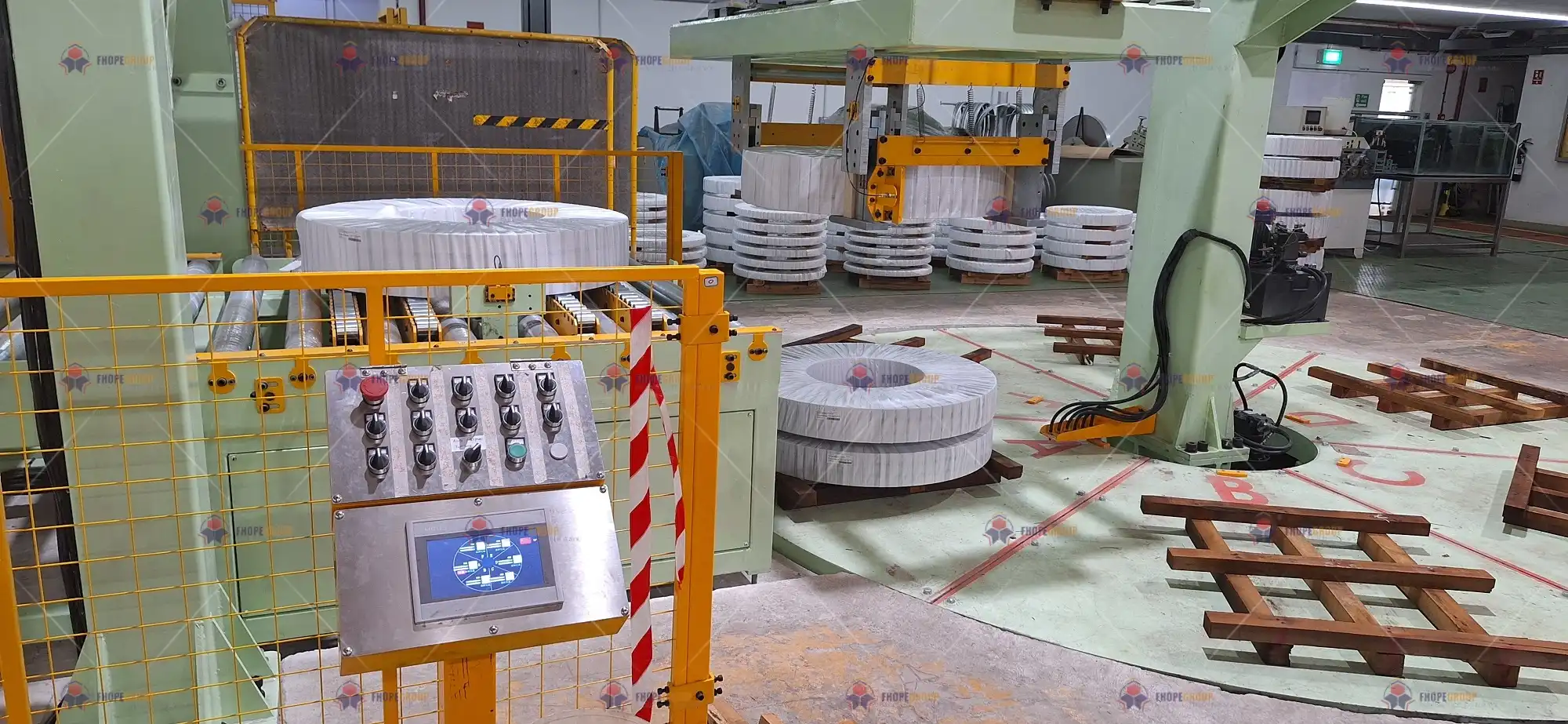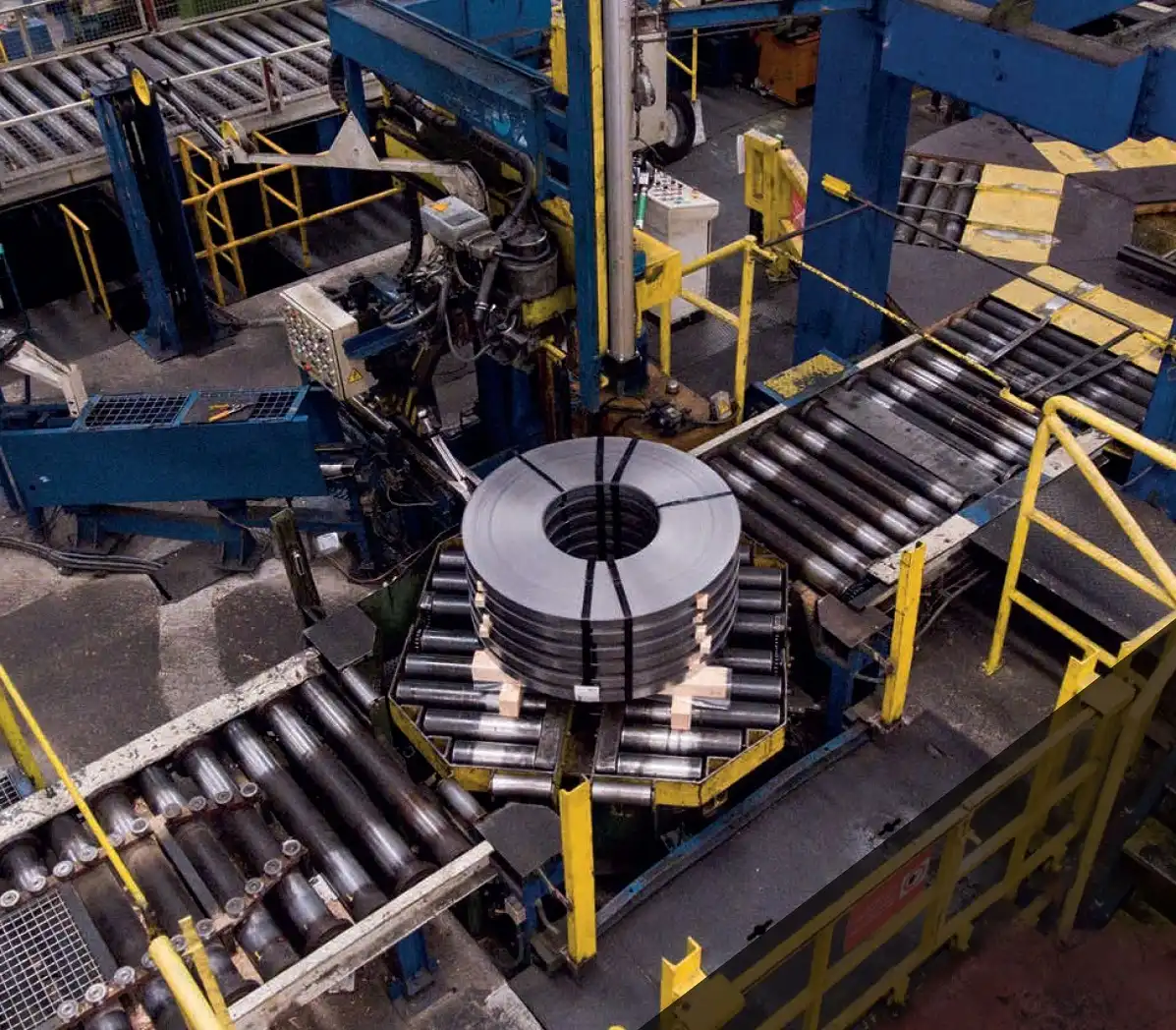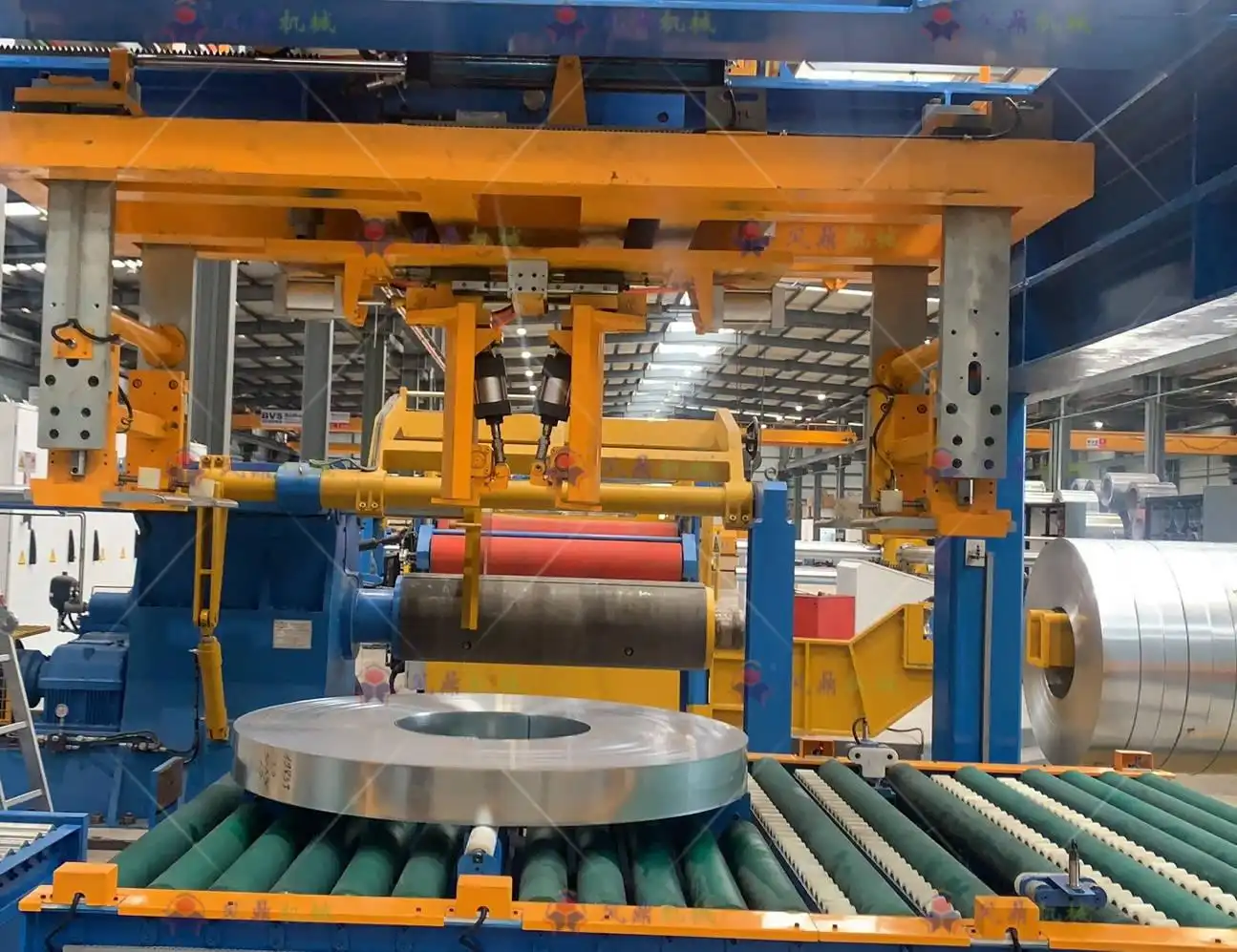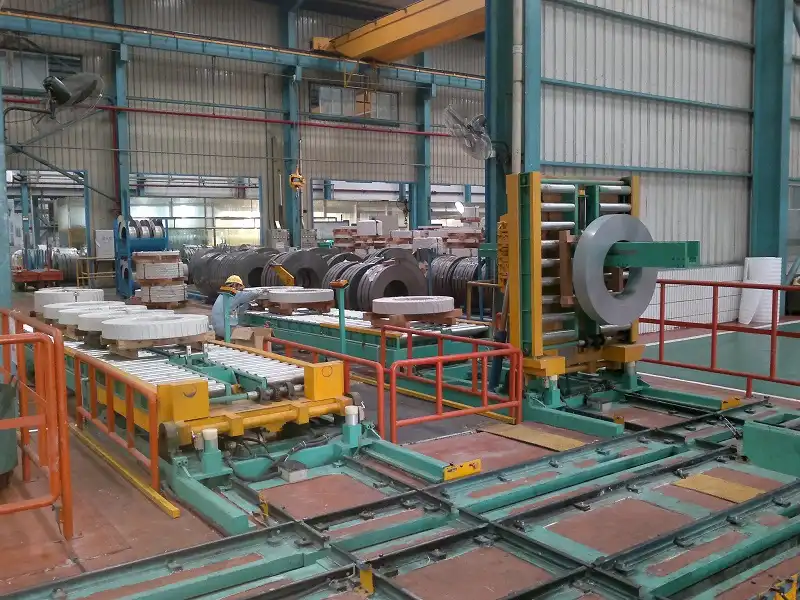Are you running a manufacturing plant in Vietnam? Then you know the pressure. Labor costs are rising. Finding skilled, reliable workers is getting harder every year. Manual packing processes, which were once the standard, are now becoming a major bottleneck. They are slow, inconsistent, and often lead to damaged products and workplace accidents. This constant struggle eats into your profit margins and makes it difficult to compete, especially in the export market. You feel stuck between rising costs and the need to maintain quality.
Smart packing systems help Vietnamese plants cut labor costs by automating the entire packing process, from coil handling and wrapping to strapping and stacking. These integrated lines significantly reduce the number of operators needed on the factory floor. This automation eliminates repetitive manual tasks, which minimizes human error and increases throughput. It allows you to reassign your valuable employees to more complex, higher-value roles, leading to direct savings in wages and a more efficient, productive workforce.

I have walked through countless factories, first as an engineer and later as a factory owner myself. I have seen firsthand how a well-designed packing line can transform an entire operation. The move from manual labor to smart automation isn't just about replacing people with machines. It's about creating a more resilient, efficient, and profitable business. But what does this transformation actually look like on the ground? Let's explore the specific ways these systems tackle the labor cost challenge head-on.
How does automation directly replace manual labor in a packing line?
Your packing area is likely a hub of constant activity. Workers are lifting, pushing, wrapping, and strapping. This is physically demanding and prone to errors. You worry about safety, consistency, and the sheer number of people it takes to get finished products ready for shipment. The problem is that manual labor is not just a cost; it is a variable you can't fully control. People get tired, make mistakes, or call in sick. This variability disrupts your entire production flow.
Automation directly replaces manual labor by creating a seamless, machine-driven workflow for packing. Instead of workers manually handling coils, a system of conveyors, tilters, and turntables moves the product. Instead of a team wrapping film around a coil by hand, an automatic wrapping machine does it perfectly every time. Strapping, weighing, and labeling are also integrated and automated. This means you can reduce the number of operators in the packing area from a team of five, six, or even more, down to just one or two supervisors who oversee the system.

From Manual Chaos to Automated Order
Let’s break down the transformation. In a typical manual steel coil packing line, the process is fragmented. A forklift drops a coil. One worker guides it onto a pallet. Two workers might then pass a roll of stretch film around the coil, a process that is slow and often results in uneven wrapping. Another worker prepares and applies straps, a physically taxing job. Finally, the packed coil is moved away. This entire sequence requires a team of at least 4-5 people working in close coordination. It’s a recipe for inefficiency and potential injury.
Now, imagine an automated line. The coil arrives on a conveyor. A sensor detects it and positions it perfectly. A tilter or turnstile orients it for wrapping. An automatic orbital wrapping machine applies the film with precise tension and overlap, using the exact amount of material needed. The wrapped coil then moves to an automatic strapping station. Finally, it is weighed, labeled, and moved to a stacking area by a robotic arm or stacker. The entire process is controlled by a central PLC. A single operator can monitor this entire line, ensuring everything runs smoothly. The other workers can be retrained for quality control, machine maintenance, or other roles that add more value than manual labor.
The Numbers Speak for Themselves
When I started my own factory, I obsessed over efficiency numbers. As a business owner, you have to. Let's compare the two methods.
| Task | Manual Process | Automated Process |
|---|---|---|
| Coil Handling | 1-2 workers, forklift | Conveyor, Tilter, Turntable |
| Wrapping | 2 workers, handheld film | Automatic Orbital Wrapper |
| Strapping | 1 worker, manual tool | Automatic Strapping Machine |
| Total Operators | 4-5 per shift | 1-2 supervisors per shift |
| Time per Coil | 5-10 minutes | 1-2 minutes |
| Consistency | Low, depends on worker | High, machine-controlled |
| Safety Risk | High (back strain, cuts) | Low (workers are supervisors) |
The reduction in direct labor is clear. If you run two shifts, you could be saving the salaries of 6-8 workers. In Vietnam, where wages are rising, this translates to massive annual savings. It’s not about eliminating jobs; it’s about elevating them. Your team moves from doing strenuous, repetitive tasks to overseeing sophisticated technology, which is a much better use of their skills.
Many plant owners I talk to initially focus only on the reduction in salaries. They see the direct math: fewer workers mean a lower wage bill. But this is just the tip of the iceberg. The problem is that focusing only on wages makes the ROI calculation incomplete. It ignores the compounding costs associated with a manual workforce, like accidents, product damage, and material waste. These "hidden costs" add up quickly and silently erode your profitability day after day.
The hidden cost savings of smart packing systems are often greater than the direct labor savings. These systems dramatically reduce product damage because machine handling is more gentle and precise than manual handling. They improve workplace safety, which lowers insurance premiums and eliminates costs associated with accidents and downtime. You also save on recruitment and training because turnover is lower for skilled operator jobs. Furthermore, automated systems optimize material usage, using the exact amount of wrapping film and strapping required, which cuts down on consumable waste.

Protecting Your Product and Your People
Think about the real cost of a damaged steel or copper coil. It’s not just the material loss. It’s the wasted production time, the cost of reprocessing or scrapping, and the potential damage to your reputation if a subpar product reaches a customer. Manual handling, with its bumps, drops, and scrapes, is a primary cause of such damage. An automated system with smooth conveyors and precise robotic grippers handles each coil with consistent care. I helped a client in Vietnam who was losing nearly 2% of their slit coils to edge damage during packing. After installing an automated line, that figure dropped to less than 0.2%. The savings from preventing product damage alone paid for nearly a third of the machine's cost in the first year.
Workplace safety is another huge area of savings. Manual packing involves heavy lifting and repetitive motions, leading to back injuries, strains, and cuts. An accident doesn't just mean medical costs. It means lost workdays, investigation time, and a potential drop in team morale. In some countries, it leads to higher insurance premiums. By automating these dangerous tasks, you create a safer work environment. Your workers are no longer laborers; they are technicians. This shift drastically reduces injury rates and their associated costs.
Optimizing Materials and Reducing Turnover
Consumable materials like stretch film and strapping are a significant operational expense. Manual wrapping is incredibly wasteful. Workers often use too much film to be "safe," leading to inconsistent and costly packages. A smart wrapping machine, on the other hand, is programmed for optimal material usage. It pre-stretches the film and applies it with consistent tension, often reducing film consumption by 30-50%. If your plant uses hundreds of rolls of film a month, these savings are substantial.
Finally, consider the costs of employee turnover. Low-skilled, physically demanding jobs often have high turnover rates. This means you are constantly spending money and time on recruiting, hiring, and training new people, only to have them leave a few months later. Skilled machine operators who oversee automated systems are more likely to see their job as a career. They are more engaged and have higher job satisfaction. This stability reduces your recruitment budget and ensures you have a knowledgeable, experienced team running your critical packing operations. These hidden savings are real, measurable, and they flow directly to your bottom line.
Can small or medium-sized plants in Vietnam afford these systems?
I often meet owners of smaller, growing plants. They see the benefits of automation, but they look at the large, fully integrated lines and say, "Vincent, that is for the big corporations. My budget is limited. I can't afford that." They see a huge, upfront cost and believe it's out of reach. The problem is they are viewing it as an expense, not an investment. They are also assuming that automation is an "all or nothing" proposition, where you have to buy the most complex system from day one.
Yes, small and medium-sized plants in Vietnam can absolutely afford smart packing systems by focusing on Return on Investment (ROI) instead of just the initial price. The key is to start with a modular, scalable solution. You don't need a fully automated line immediately. You can begin with a single semi-automatic wrapping machine to solve your biggest pain point, and then add conveyors, tilters, and strapping machines as your business grows and the initial machine pays for itself. This phased approach makes automation accessible to nearly any budget.

Shifting Your Mindset from Cost to ROI
The most important first step is a change in perspective. An entrepreneur like Javier Morales doesn't ask "How much does it cost?" He asks, "What is the payback period?" and "How will this increase my profit margin?" Let’s do a very simple calculation. Suppose a semi-automatic wrapper costs $15,000. If it allows you to reassign two workers, whose combined annual salary and benefits are $12,000, the machine pays for itself in just over a year from labor savings alone. This doesn't even include the savings from reduced film usage and less product damage.
When you present the investment this way, the decision becomes much easier. It's no longer an expense. It's a strategic move that generates positive cash flow after the payback period. The real question is not "Can I afford to automate?" but "Can I afford not to automate?" While you continue with inefficient manual processes, your competitors who did invest are lowering their costs, improving their quality, and capturing more market share. The cost of inaction is often far greater than the cost of the machine.
Start Small, Scale Smart
The beauty of modern packing systems is their modularity. At SHJLPACK, we design solutions, not just sell machines. We can start with the core problem. Is your biggest issue the time it takes to wrap? Let's start with a high-quality orbital wrapper. Is moving the coils the main bottleneck? Let's start with a basic conveyor and tilter system.
Here is a possible phased approach for a medium-sized plant:
- Phase 1: The Core Machine. Install a semi-automatic or automatic wrapping machine. This immediately addresses wrapping quality, speed, and material waste. The labor savings begin on day one.
- Phase 2: Add Infeed/Outfeed. Once the wrapper has proven its value, add conveyors to bring coils to the machine and take them away. This further reduces manual handling and speeds up the entire process.
- Phase 3: Full Automation. Integrate an automatic strapping machine, a weighing station, and a robotic stacker. At this point, you have a fully automated line that requires minimal human intervention.
Each phase is a self-contained project with its own clear ROI. You use the savings from Phase 1 to help fund Phase 2, and so on. This makes the journey to full automation manageable and financially viable for plants of all sizes.
What role does data and connectivity play in smart packing?
Many factory managers believe that once a machine is automated, the job is done. They have replaced manual labor, and the machine is running. The problem is, they are missing the most powerful aspect of modern systems: the "smart" component. An automated machine simply repeats a task. A smart system collects data, communicates, and provides insights that allow you to manage your entire operation more intelligently. Without this connectivity, you have an efficient island, but you don't have a truly optimized factory.
Data and connectivity are what elevate an automated packing line into a smart packing system. By using IoT sensors and connecting the packing line to a central Manufacturing Execution System (MES), you can achieve total production visibility. This data allows you to track every coil, monitor machine health for predictive maintenance, analyze efficiency, and identify bottlenecks in real-time. It transforms your packing line from a simple operational unit into a valuable source of business intelligence that helps you achieve goals like 95% capacity utilization and lower operational costs.

Making Your Machines Talk
A smart packing system is full of sensors. These sensors are the system's eyes and ears. They can track much more than just whether a coil is present. They can monitor:
- Machine Health: Vibration, temperature, motor current, and cycle counts. This data is critical for predictive maintenance. Instead of waiting for a breakdown, the system can alert you that a bearing is wearing out or a motor is overheating, allowing you to schedule maintenance during planned downtime. This is key to reaching a 95% equipment uptime goal.
- Material Consumption: The system knows exactly how much stretch film and strapping is used for each package. This data can be used to precisely calculate the cost per package and manage inventory for consumables.
- Production Throughput: It tracks how many coils are packed per hour or per shift. This information, when compared against production schedules, immediately highlights any slowdowns or bottlenecks.
- Product Data: By integrating with a barcode or QR code scanner, the system can link each packed coil to its production data (weight, grade, customer order). This provides full traceability from the furnace to the final customer.
From Data to Decisions
Collecting data is useless if you don't act on it. This is where connectivity to an MES or ERP system comes in. The data from your packing line doesn't stay on the machine's local controller. It is sent to a central platform where managers can view it on dashboards. A plant manager like Javier can sit in his office and see the real-time status of the packing line. He can see the Overall Equipment Effectiveness (OEE), identify the main causes of downtime, and compare the performance of different shifts.
This visibility drives smarter decisions. If the data shows that the strapping machine is the cause of 40% of the line's short stops, you know exactly where to focus your engineering efforts. If you see that one shift is consistently more productive than another, you can investigate why and share best practices. This data-driven approach is fundamental to achieving the kind of deep, systemic cost reductions—like an 8% drop in overall operating costs—that executives are tasked with delivering. It moves you from guessing to knowing. Your packing line becomes a transparent, predictable, and continuously improving part of your factory.
My Insight
When I was a young engineer on the factory floor, I saw the daily struggle. I saw workers straining to lift heavy parts and managers stressing over missed deadlines. Later, when I built my own packing machine factory, I faced those same challenges from the owner's chair. I had to worry about payroll, material costs, and keeping my clients happy. That journey, from employee to owner, taught me one crucial lesson: a machine is not just a piece of steel. It is a solution to a business problem. For a leader like Javier Morales, the problem isn't just about packing coils. It's about reducing energy costs, managing aging equipment, and hitting ambitious profit targets.
This is why at SHJLPACK, our slogan is "TOTAL SOLUTION FOR WRAPPING MACHINE." We don’t just sell you a machine. We partner with you to solve your specific challenges. I achieved financial independence because this industry was good to me. My clients grew their businesses using the equipment we built together. Now, my mission is to give back. I want to share the knowledge I’ve gained to help others succeed.
I remember a client in Vietnam who was struggling with a major export contract. Their manual packing was too slow and the quality was inconsistent, leading to complaints from their European customer. They were on the verge of losing the contract. We didn't just propose the most expensive, fully automated line. We sat down with them. We analyzed their workflow. We identified the main bottleneck, which was the wrapping process. We started them with a robust, semi-automatic orbital wrapper. It immediately solved their quality and speed issues. They saved the contract. A year later, they came back to us for a full conveyor and strapping system, funded by the profits they had made. Today, they are one of the leading exporters in their region.
That is what being a strategic partner means. It’s about understanding the bigger picture and growing together. It's about providing practical, scalable solutions that deliver a real return on investment. Helping others succeed in this industry is the most rewarding part of my work now.
Conclusion
Smart packing is no longer a luxury for Vietnamese plants. It is a vital strategy for cutting labor costs, boosting efficiency, and securing a competitive future in a demanding market.





